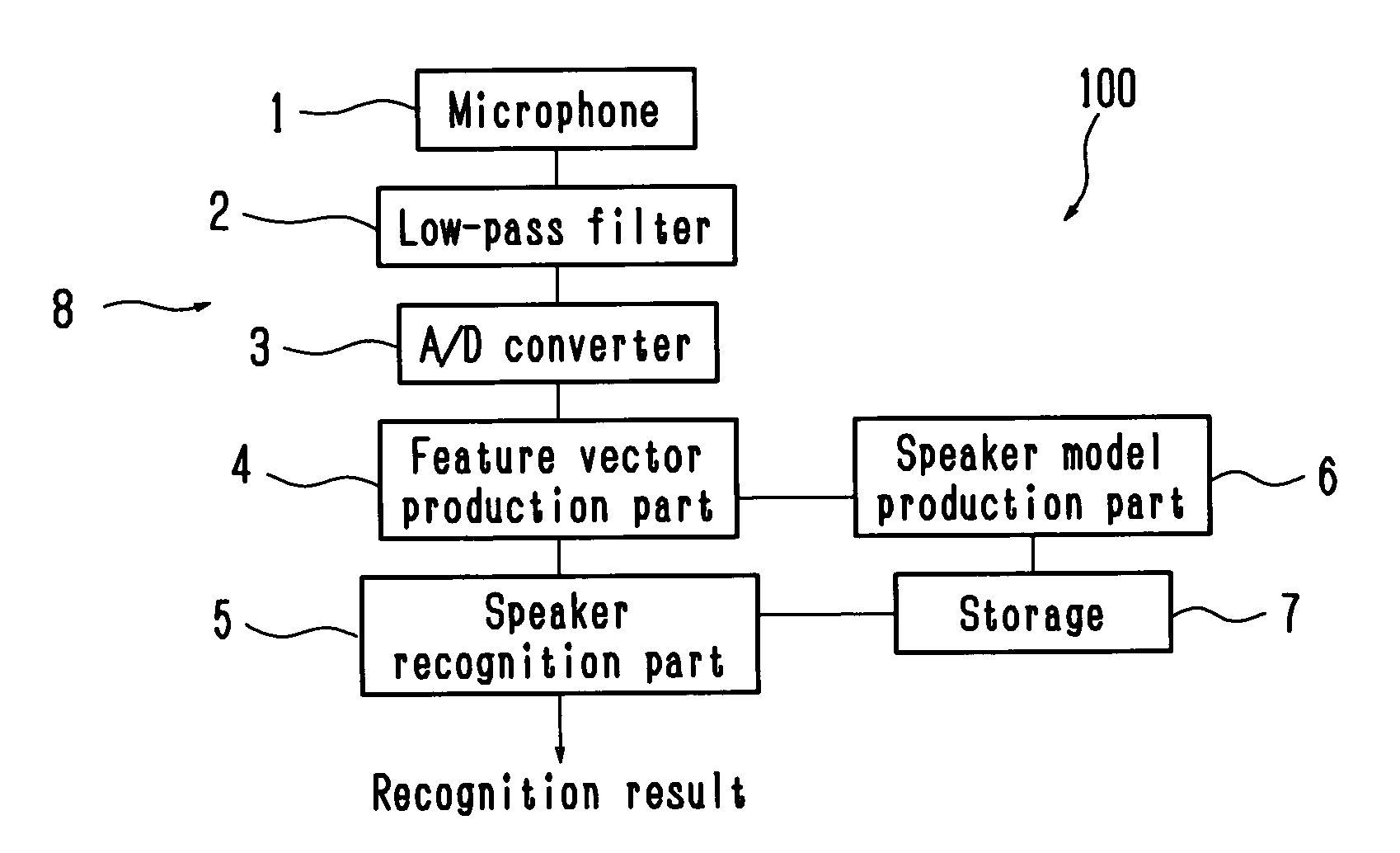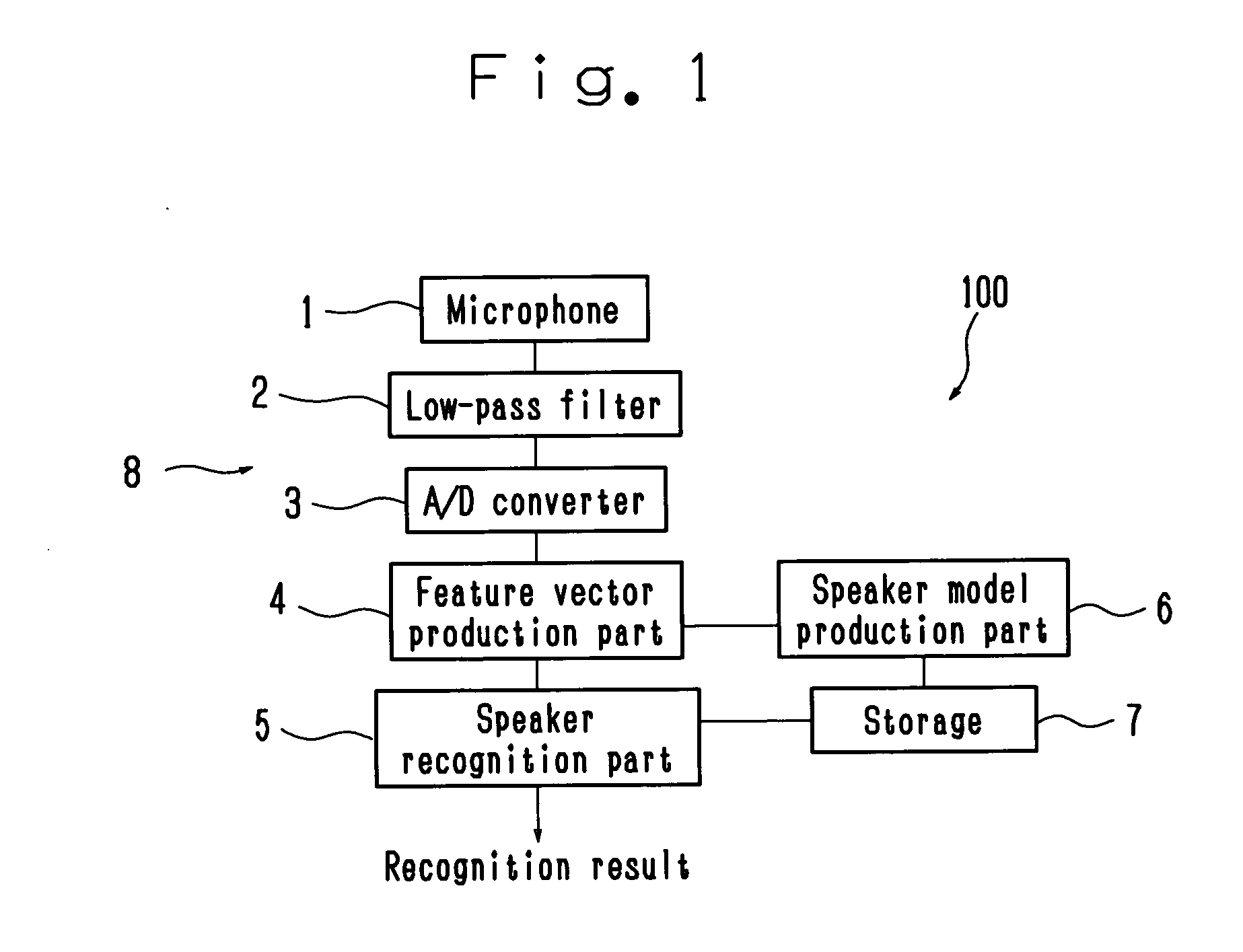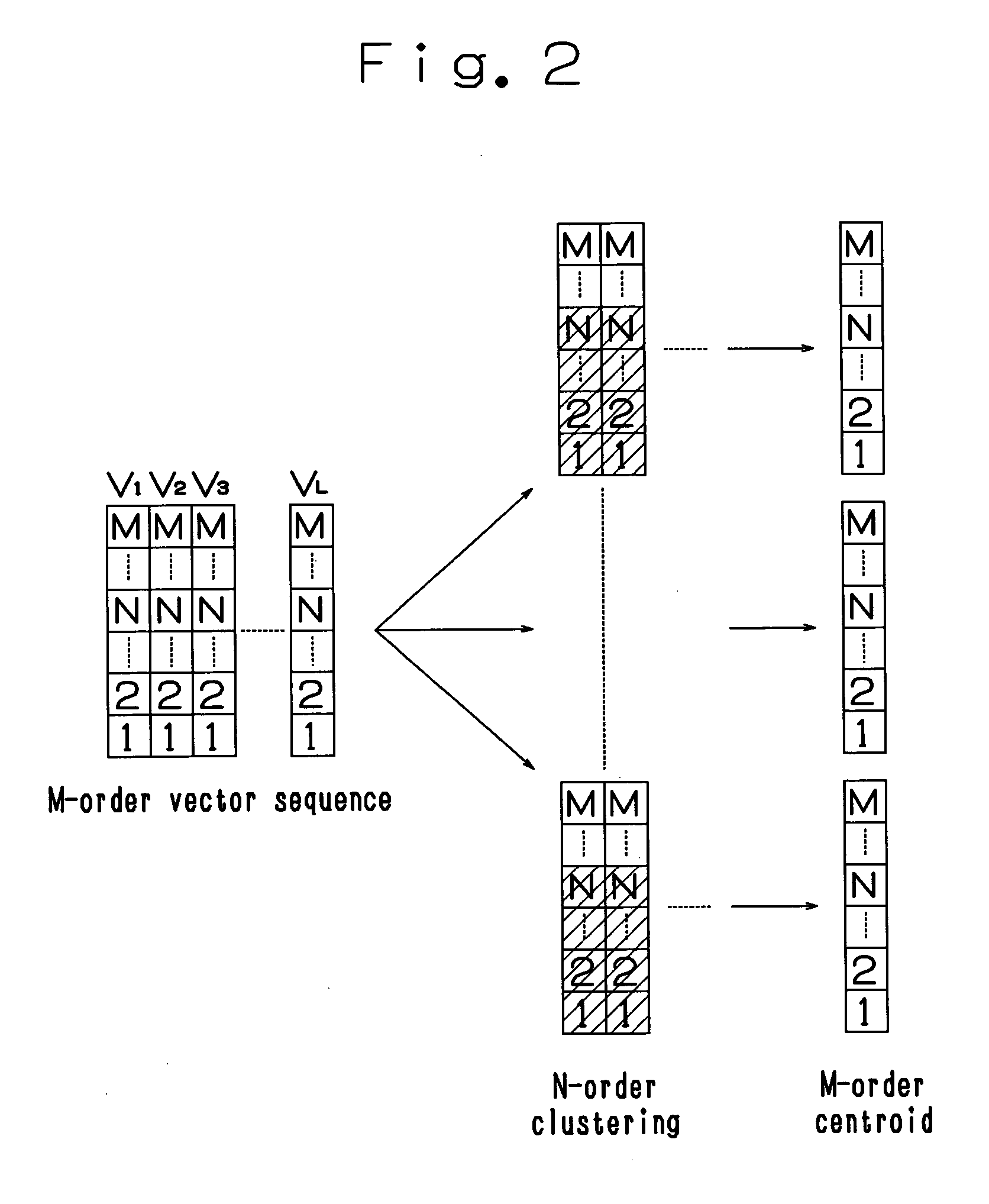Speaker recognition apparatus, computer program for speaker recognition, and speaker recognition method
a speaker recognition and computer program technology, applied in speech recognition, speech analysis, instruments, etc., can solve problems such as the problem of determining the order in which the voice feature vector should be set, and the problem of a trade-off relationship
- Summary
- Abstract
- Description
- Claims
- Application Information
AI Technical Summary
Problems solved by technology
Method used
Image
Examples
first embodiment
[0037] According to the present invention, in the registration mode, the vector to vector distance of each voice feature vector D1 can be obtained by using N-order vector element in the M-order voice feature vector sequence produced from a voice of the speaker to be registered in the registration mode. The M-order voice feature vector sequence is clustered based on the vector distance D1, and the codebook made up of plural M-order centroids is produced. In addition, in the identification mode, each voice feature vector of the M-order voice feature vector sequence is quantized based on the quantization distance D2 between each M-order voice feature vector produced from a voice of the speaker to be recognized and the N-order vector element of each representative vector of the codebook, the distortion distance D3 using the M-order vector element is obtained, and speaker recognition is executed based on the average value of the quantization distortions. With the above structure, a trade...
second embodiment
[0041] The speaker model production part 6 will be explained with reference to FIG. 2. The speaker model production part 6 clusters a M-order voice feature vector sequence, which is produced from a voice of the speaker to be registered at the feature vector production part 4 in the registration mode, into a number of clusters corresponding to a predetermined codebook size, obtains a centroid as a weighted center of each cluster to make the centroid a representative vector for the cluster, and registers a plurality of representative vectors to the storage section (dictionary) 7 as a codebook. The codebook is produced for each registered speaker.
[0042] Here, the clustering is executed by using the M-order voice feature vector sequence, and the representative vector is obtained in M-order. The weighted vector distance D1 between the vectors used at the clustering can be obtained from the following formula (4). In this embodiment, N=8, M=16 and the codebook size is 32. D 1=[∑k=1MUk...
PUM
 Login to View More
Login to View More Abstract
Description
Claims
Application Information
 Login to View More
Login to View More - R&D
- Intellectual Property
- Life Sciences
- Materials
- Tech Scout
- Unparalleled Data Quality
- Higher Quality Content
- 60% Fewer Hallucinations
Browse by: Latest US Patents, China's latest patents, Technical Efficacy Thesaurus, Application Domain, Technology Topic, Popular Technical Reports.
© 2025 PatSnap. All rights reserved.Legal|Privacy policy|Modern Slavery Act Transparency Statement|Sitemap|About US| Contact US: help@patsnap.com



